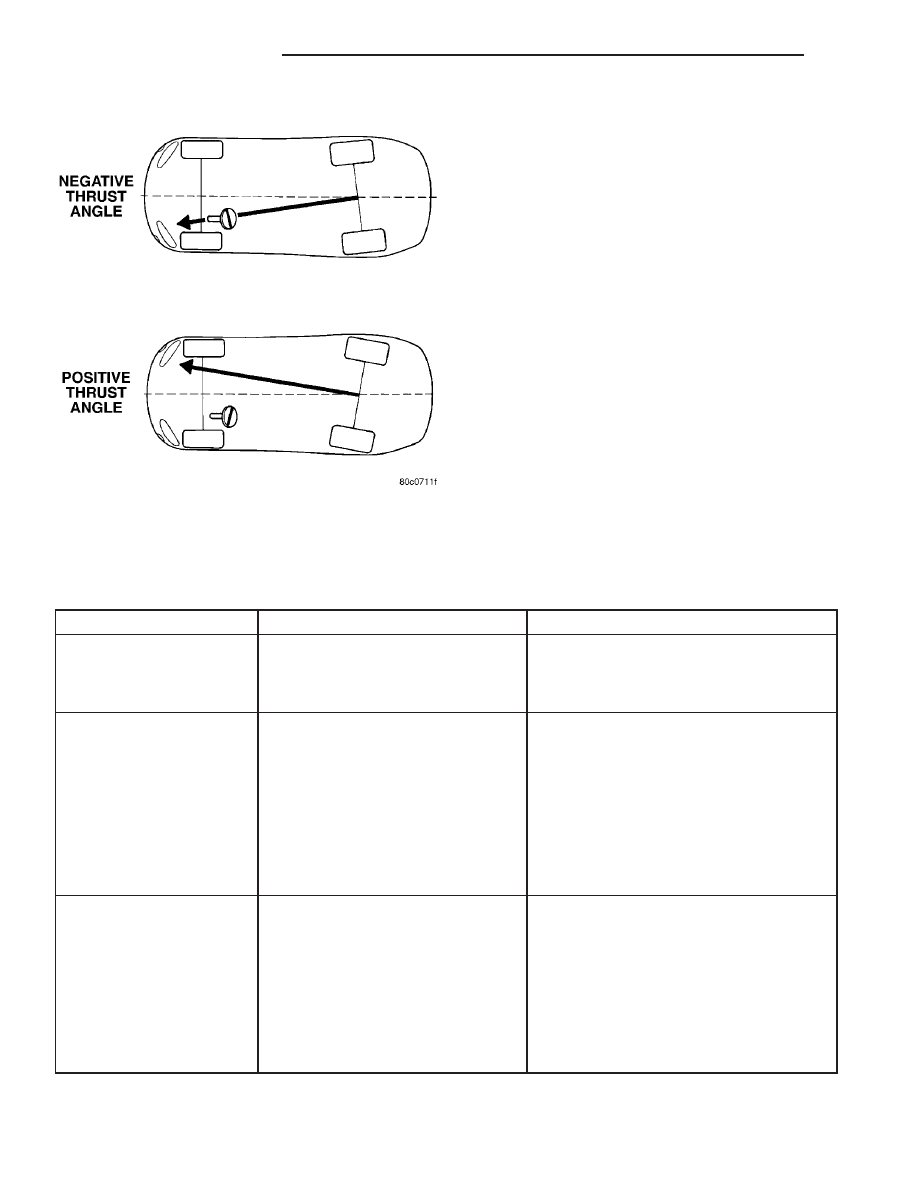Chrysler PT Cruiser. Manual - part 405

DIAGNOSIS AND TESTING - SUSPENSION AND STEERING
CONDITION
POSSIBLE CAUSES
POTENTIAL CORRECTIONS
Front End Whine On Turns
1. Defective Wheel Bearing
1. Replace Wheel Bearing
2. Incorrect Wheel Alignment
2. Check And Reset Wheel Alignment
3. Worn Tires
3. Replace Tires
Front End Growl Or
Grinding On Turns
1. Defective Wheel Bearing
1. Replace Wheel Bearing
2. Engine Mount Grounding
Against Frame Or Body Of Vehicle.
2. Check For Motor Mount Hitting Frame
Rail And Reposition Engine As Required
3. Worn Or Broken C/V Joint
3. Replace C/V Joint
4. Loose Wheel Lug Nuts
4. Verify Wheel Lug Nut Torque
5. Incorrect Wheel Alignment
5. Check And Reset Wheel Alignment
6. Worn Tires
6. Replace Tires
Front End Clunk Or Snap
On Turns
1. Loose Wheel Lug Nuts
1. Verify Wheel Lug Nut Torque
2. Worn Or Broken C/V Joint
2. Replace C/V Joint
3. Worn Or Loose Tie Rod Or Ball
Joint
3. Tighten Or Replace Tie Rod End Or Ball
Joint
4. Worn Control Arm Bushing
4. Replace Control Arm Bushing
5. Loose Sway Bar Or Upper Strut
Attachment
5. Tighten Sway Bar Or Upper Strut
Attachment To Specified Torque
Fig. 6 Thrust Angle
2 - 56
WHEEL ALIGNMENT
PT
WHEEL ALIGNMENT (Continued)